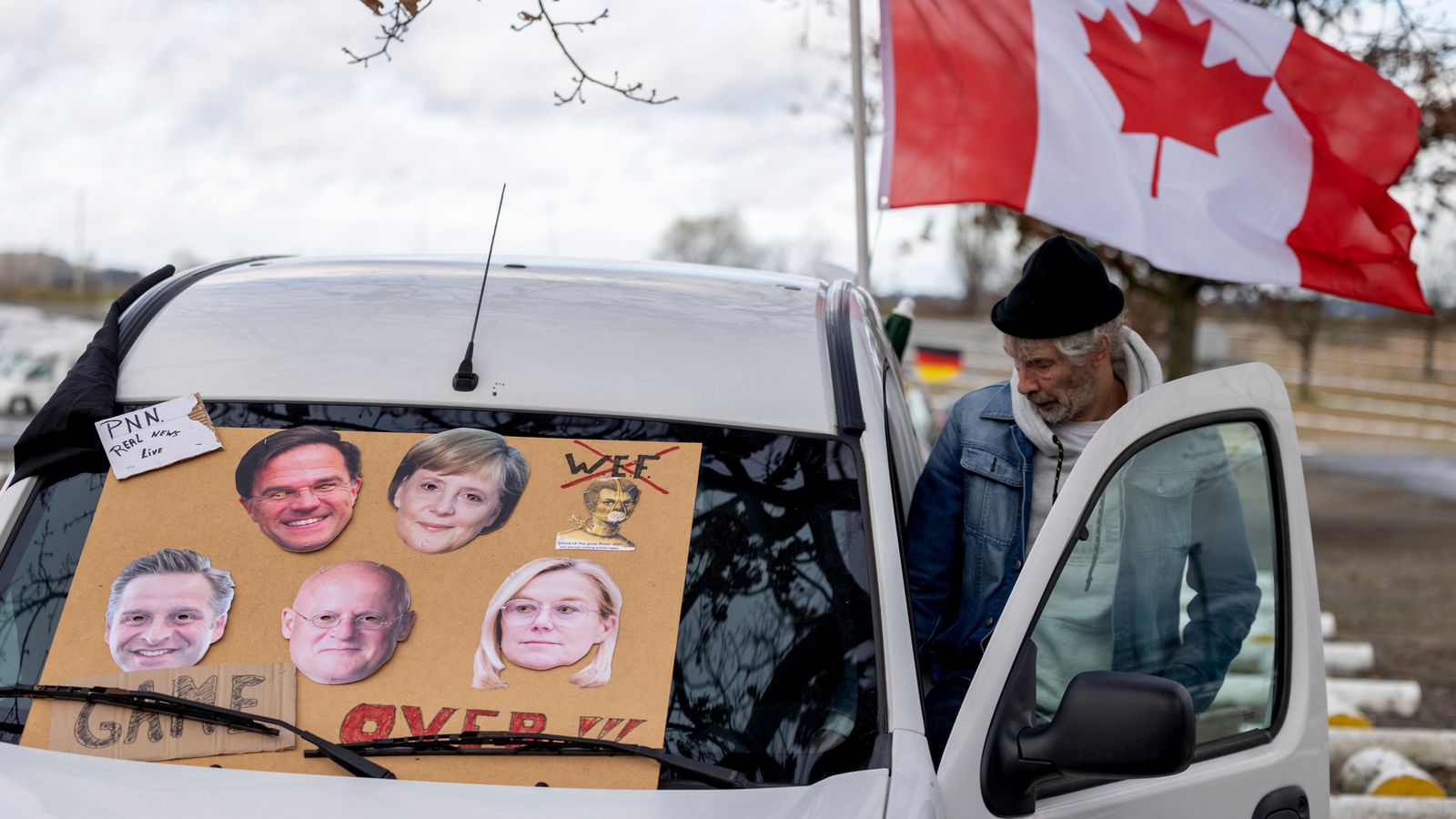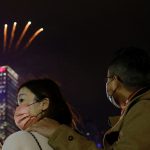Police in Brussels had to impose traffic restrictions during Monday’s morning rush hour in an attempt to stop a vehicle protest from causing problems.
The Belgian capital was the latest city around the world to be targeted by rallies inspired by the truckers’ protests in Canada.
The protesters are angry about ongoing COVID-19 restrictions and vaccine requirements.
Some highways were narrowed and other traffic was slowed, with extensive precautions in and around the headquarters of the European Union.
Early indications did not show a groundswell of support for the protest, but trucks are expected to come from France later.
France
A threatened blockade of Paris failed to materialise over the weekend but police in the French capital fired tear gas on a handful of protesters on the Champs-Elysees Avenue.
COVID-19: Death metal band Omicron won’t change its name
COVID-19: Riot police deploy water cannon and tear gas against anti-lockdown protesters in Brussels
COVID-19: Austria starts new national lockdown as protests against coronavirus restrictions spread across Europe
Officers said they had defied a police order by taking part in a vehicle protest.
The Netherlands
The entrance to the Dutch parliamentary complex in The Hague was blocked by dozens of trucks and other vehicles on Saturday.
The convoy included tractors and a car towing a camping van.
Canada
Protests continue in Canada, with more than two dozen people arrested, seven vehicles towed, and five seized in the area near the Ambassador Bridge before it reopened.
The bridge between Windsor, Ontario, and Detroit, Michigan, carries 25% of trade between Canada and the US, and the blockade on the Canadian side had affected several businesses.
Protesters have also paralysed the centre of Ottawa, with increasing pressure from residents for police and Canada’s Prime Minister Justin Trudeau to take action.
There were 4,000 protesters by Saturday, with a counter-protest from frustrated residents on Sunday.
Ottawa’s mayor Jim Watson said the city has struck a deal with protesters, who have been in the city for more than two weeks, that will see them confine their protest to an area around Parliament Hill.
This would mean they and their vehicles will have to leave residential areas by noon on Monday, local time.
New Zealand
Some 3,000 people were on the grounds of the parliament building in Wellington during the weekend, nearly a week after their protest began.
Efforts to move them away included playing Barry Manilow, James Blunt, and Celine Dion music over loudspeakers.
Prime Minister Jacinda Ardern also criticised the protests as having “moved beyond sharing a view to intimidation and harassment of the people around central Wellington”.
But, with portable toilets, crates of donated food, and bales of straw to lie on, the protesters seem to be there for the long haul.






















